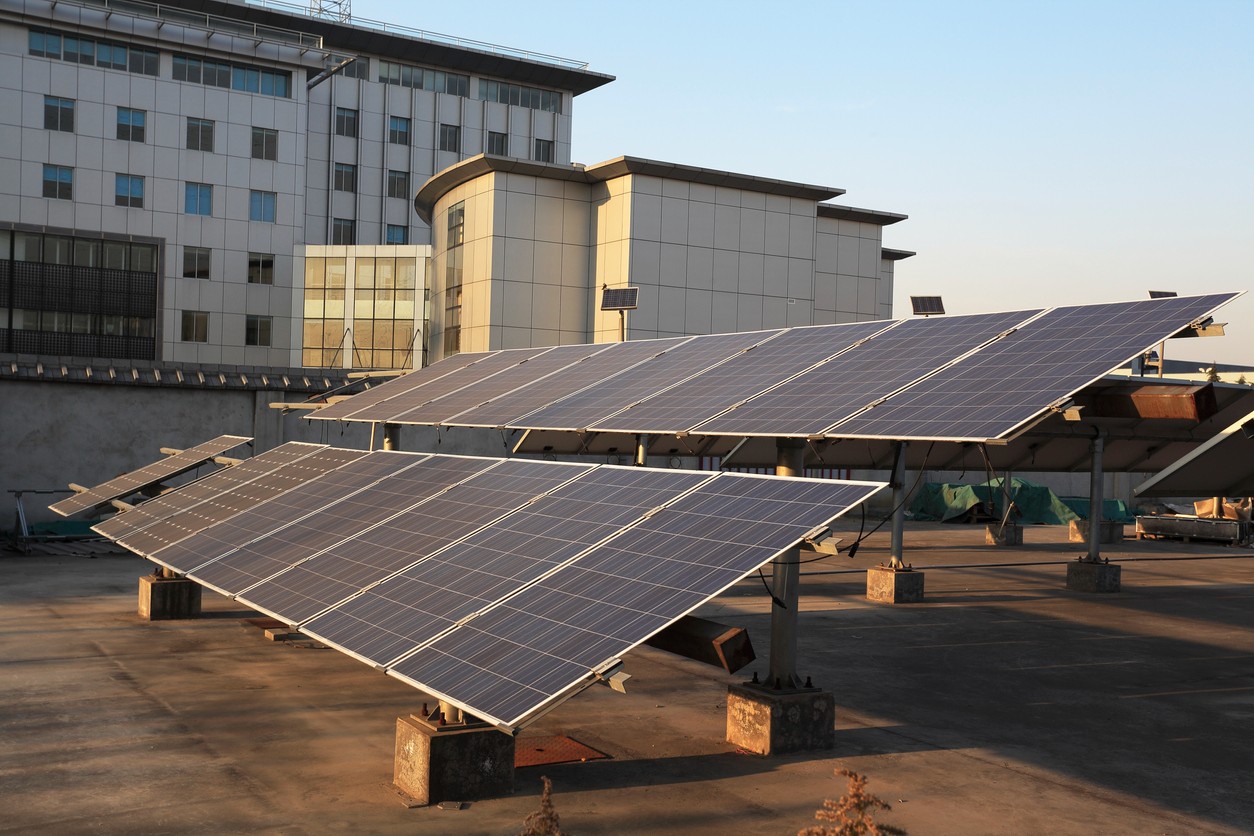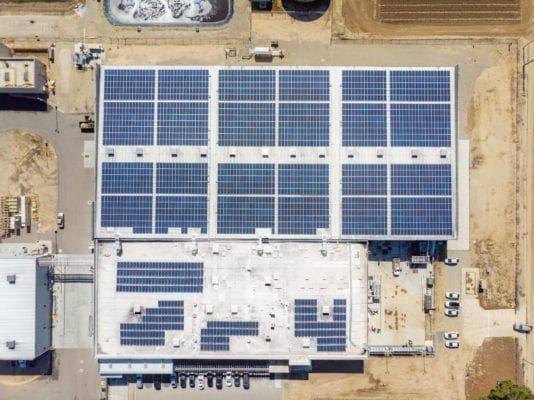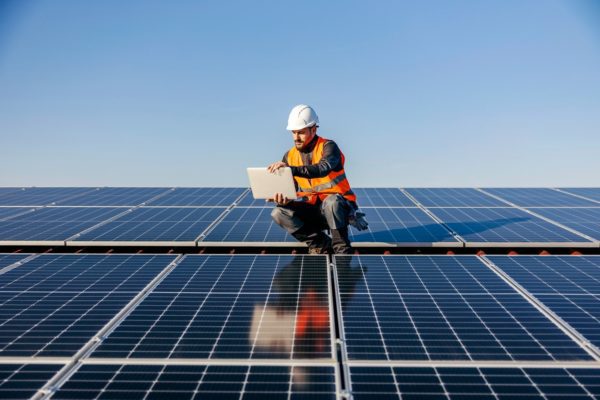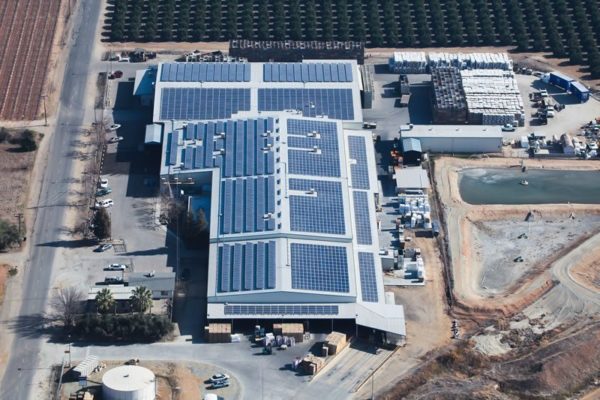
Rooftop solar is a fantastic method to use a cost-free, renewable resource to produce electricity. Commercial and industrial buildings usually have flat and large roofs that aren’t shaded. Since rooftop solar photovoltaic (PV) systems need a lot of energy to function, these large spaces work particularly well for these buildings.
Businesses can reduce or even eliminate the purchase of electricity from their utility by producing their own energy. Furthermore, many utilities still generate energy using fossil fuels like coal or natural gas.
Solar energy has contributed to generating green energy for a long time now. It has a considerably less negative impact on the environment, avoiding many toxic repercussions of conventional electricity generation.
What is a Commercial Rooftop Solar System?

Rooftop solar is a PV system that uses solar panels on the roof to generate electricity. It is installed on a building’s rooftop. Rooftop solar generates direct current energy by capturing sunlight using photovoltaic cells and converting it to alternating current with the help of inverter technology. Finally, the alternating current energy is disseminated throughout the house after passing via the electrical panel of the building.
When considering rooftop solar, the roof system should last as long as or longer than the PV arrays. There are several significant factors to consider when designing a roof system and panel arrangement, regardless of whether the roof is new and already has PV arrays, will have them installed soon, or if the roof is already in place with built-in solar arrays.
Best Practices for Designing a PV Roof System
The economic life of a PV array is over 25 years. It is often too expensive to remove current PV arrays, put on a new roof, and then put them back in place for commercial rooftop solar. The perfect time to install a rooftop PV system is immediately following the installation of a new roof or during the construction of a brand-new building.
The most important thing is that the roof system should have an equal or longer life than the expected economic life of PV arrays. The following factors should be taken into account by designers to define a roof system that is as durable as the PV array:
- Roof membranes should be reflective, offer excellent weather protection, and have great thickness.
- It is better to incorporate a cover board beneath the membrane to help prevent damage and punctures from rooftop traffic.
- Using stiff insulation with high compressive strength improves traffic resistance and prevents insulation damage from the overburdened solar weight.
- A guarantee or a warranty of the roof system that outlasts the life of the PV arrays is beneficial.
Process of Commercial Rooftop Solar Installation
 ]
]
Let’s assume that you decide to place a solar system on your building’s rooftop. What does the procedure look like? We will divide the commercial rooftop solar installation process into:
- Evaluation
- Design
- Permitting
- Interconnection
- Installation and Upkeep
1. Evaluation Stage
If you are considering installing a commercial rooftop solar system, you must consider a few logistical factors before beginning the project, such as:
- Does your roof have enough room for a system of the right size?
- Is the condition of your roof good?
- Does the roof get sufficient sunlight to generate the required amount of power?
- Are there any rules or restrictions preventing you from installing a rooftop solar system?
Answering these questions will help you and your team create result-oriented planning, and you will be able to identify the best course of action for your building. Depending on your needs and priorities, a rooftop system for your facility can be different than others.
Please clearly communicate the capabilities, limitations, constraints, and expectations to satisfy all the needs of the project and stakeholders. Additionally, there are a lot of financial incentives granted by the federal, local, and state governments and some utilities for the usage of renewable energy.
You can ask your project manager about any funding opportunities available. These incentives can dramatically reduce expenditures and provide more flexibility to your budget.
2. Design Stage
After completing the evaluation phase, you must move on to the next phase, the design of your ideal rooftop solar system. Your solar contractor will build a system that considers the necessary capacity requirements and safety precautions. Each system can be modified with various parts and configurations to fit your facility’s needs.
PV arrays are typically oriented to capture as much solar energy as possible by keeping panels away from walls and other shading factors. During the arrangement of PV panels, it is essential to consider the access to mechanical components, anchors, catwalks, fire safety, and drainage systems.
The solar system size should fulfill the client’s needs, space limitations, the project’s budget, availability of the sun in the area, energy offset, any future expansion plans, and the deterioration of PV panel performance with time.
Your project can go on to the permitting stage if the design has been approved and complies with all specifications.
3. Permitting Stage
You can get permission from the Authority Having Jurisdiction (AHJ) by following a typical application process. AHJs include organizations, governments, and other authoritative bodies that determine which norms and standards must be followed for a project.
You will probably need to work with the local government, utility provider, and fire department to plan a rooftop solar project. You should obtain permits for structural, electrical, and dedicated solar photovoltaic (PV) from your local government to ensure the solar system complies with all state-mandated requirements.
The authorities in the local fire department require a site design including the array layout, the setbacks from the roof lines, the locations of the access pathways, and the location of the utility disconnect to understand the overall structure.
Utility companies must ensure that the rooftop solar system complies with all applicable net metering regulations and electrical safety standards. The remainder of the installation process can begin if the electric utility approves the installation application. After installing the solar equipment, the last phase of solar commissioning and interconnection will occur.
4. Interconnection Stage
Usually, rooftop solar systems take advantage of being connected to the local utilities’ electric grid. This configuration can reduce the customer’s electricity expenses and offer backup power if necessary.
Depending on the utility, interconnection designs fall into one of three broad groups. Be sure to talk with your utility provider about the best action. The three categories include:
- The customer exports extra energy they didn’t use.
- The customer exports all generation and supply load in a utility power outage.
- The consumer exports the utility of all generated energy from the system.
5. Installation & Upkeep Stage
Once you have secured the necessary permits, you can install the system. Before commissioning, you must perform the final visual inspections to ensure the system complies with all relevant codes. When these inspections are approved, it will be allowed for usage and will be able to start producing power.
Routine maintenance and inspections are required to keep it in good working condition throughout the system’s operational life. A rooftop solar system can offer clean, sustainable power for 20 to 25 years with proper installation, design, and maintenance.
A rooftop solar investment will benefit your business’s financial line and brand over the long term. Renewable energy investments will be a simple way to achieve ESG objectives as ESG concepts (environmental, social, and governance) are essential for many businesses. You can work with your project team to select the best strategy for your unique scenario.
Why is Commercial Rooftop Solar System Convenient for You?

No matter where it is installed or how many panels are utilized, solar photovoltaic (PV) technology operates on the same principles. When the size of the solar project expands, there are more general items to install, configure and test before putting a new system online.
When applying for the requisite permissions from local utilities and regulators, larger solar projects make the permitting process and documentation more complex. As a result, many companies turn to commercial rooftop solar contractors who focus on more significant, trickier projects.
Many businesses are setting sustainability goals to play their part in the environmental movement. One of the most important corporate social responsibility initiatives is using renewable energy sources like solar energy.
Going solar benefits the environment and strengthens your brand because it demonstrates to people that your business cares about the environment. This will surely draw clients who share your views and create business prospects.
Commercial Solar Services from Coldwell Solar
Rooftop solar power systems are growing in popularity as a means of generating electricity. With the help of commercial solar rooftop solutions, your business can go solar and save money and the environment. You can have a renewable power supply source at a low cost with careful planning and system execution.
Contact Coldwell Solar if you are interested in a rooftop PV system for your building, and our staff will be able to start the conversation about a sustainable energy solution that is suited to your needs.

